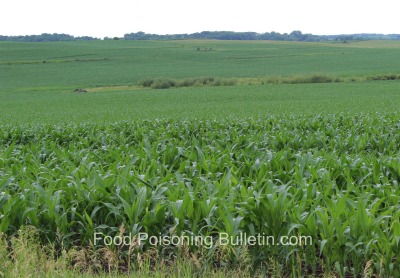Environmental Working Group has released a report called Broken Stream Banks that found pollution from farmland is a major problem in southern Minnesota, and wherever row crops are common in the U.S. the report states that this issue can be solved with the use of buffers, including grass strips, trees, and permanent vegetation. The report found that only 18% of perennial river and stream banks that are in agricultural areas are fully protected.
 Minnesota is a leader in fighting agricultural pollution with its Shoreland Management Act. That legislation places legal protection of “riparian” buffers between farmland and waterways. But the law is not being enforced across the state. There is a required 50-foot riparian buffer between farm land and waterways.
Minnesota is a leader in fighting agricultural pollution with its Shoreland Management Act. That legislation places legal protection of “riparian” buffers between farmland and waterways. But the law is not being enforced across the state. There is a required 50-foot riparian buffer between farm land and waterways.
EWG states that 170 waterways in southern Minnesota have a grade of D or F. Craig Cox, EWG’s senior vice president of agriculture and natural resources said, “polluted runoff from farmland is a major environmental and public health problem, but it is one that can be largely prevented in Minnesota and across the country. Better enforcement of the shore land management rule presents a remarkable opportunity to improve water quality.”
As a result of this pollution, sediment is filling up Lake Pepin near the Minnesota/Wisconsin border. Phosphorous is triggering noxious algal blooms. Algal blooms can produce toxins that can sicken people and animals. The buffer zones filter and retain sediment and store and inactive phosphorous.




